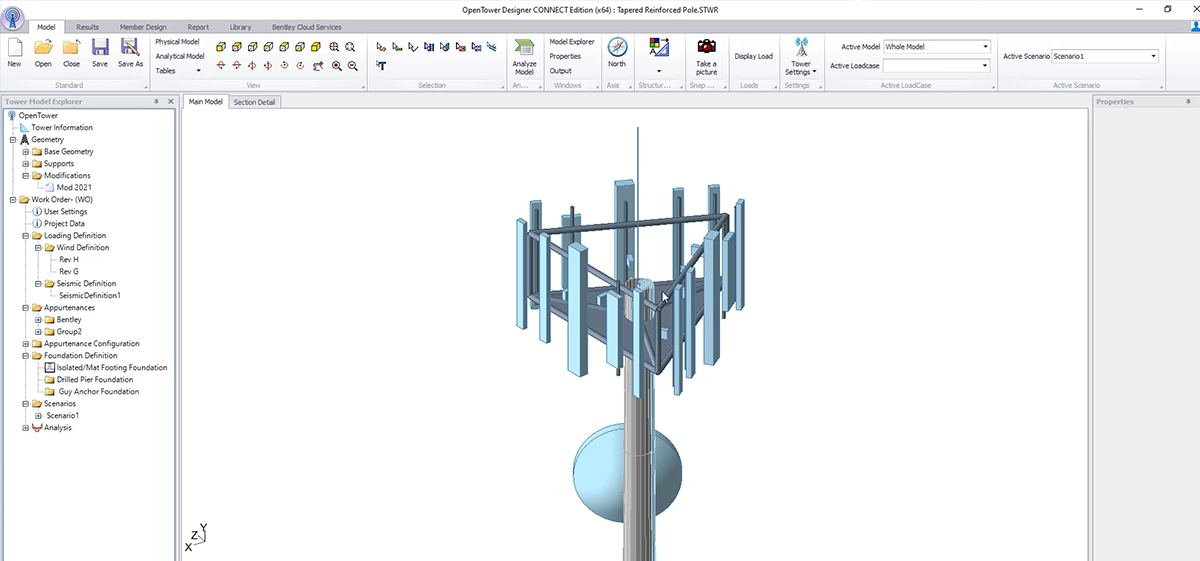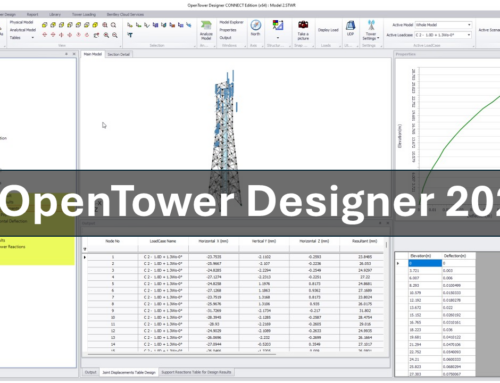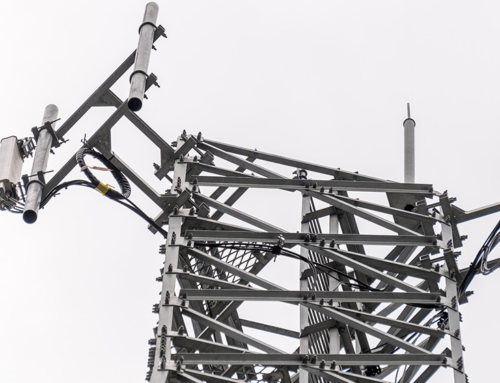Designing and analyzing telecommunications towers is time-consuming and rarely optimized. The path to making these towers safe and efficient while meeting the latest technology demands can be challenging, especially when modeling towers with different “what-if” scenarios. It requires a substantial amount of time and effort to get right.
Bentley’s OpenTower Designer offers scenario analysis, a unique and innovative capability within the platform, that improves the telecom tower analysis workflow to complete projects faster.
What Is Scenario Analysis?
OpenTower Designer’s scenario analysis allows engineers to create different scenarios to optimize tower capacity, increase the tower owner’s revenue, and reduce the carrier’s modification cost. It utilizes a new concept called layered analytical modeling. Engineers can easily develop tower models by combining different building blocks, including a base geometry and various analysis parameters. Those parameters include:
- Modification Geometries – geometry changes, including reinforcements, that can be made to the base geometry of the telecom tower
- Loading Definitions – how different loading criteria on the telecom tower are evaluated
- Appurtenances Groups and Configurations – the nature and arrangement of equipment, cables, etc. that can be attached to the telecom tower
To define a scenario, a user can easily select one or more analysis parameters from a list of predefined building blocks. Using the base geometry and selected analysis parameters, the software generates an analytical model and presents the analysis results for the scenario. The scenario can then be saved in the model file for later reference, along with other scenarios defined by different selections of analysis parameters as shown below.
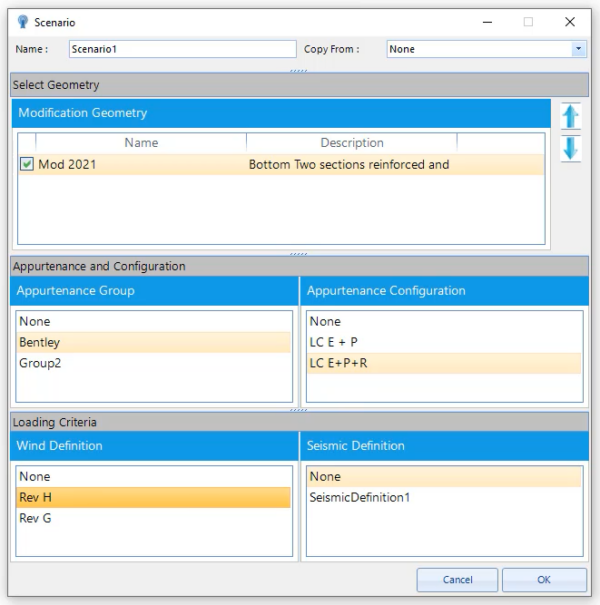
A Testbed for Engineers
Telecom tower owners want as many tenants as possible to maximize their revenue. Telecom operators leasing space want to maximize their usage for efficient equipment placement. So, what happens on a tower when all its tenants want to install new equipment?
To satisfy the business case for both the tower owner and the operators, engineers need to evaluate different what-if scenarios. However, the process of setting up different scenarios and testing each one is complex. It involves manipulating multiple project files, creating copies, managing directories, and assembling components. These processes can be costly and involve numerous resources, which may not always be readily available. As a result, these evaluations are often skipped, leading to suboptimal results.
This is where OpenTower Designer‘s scenario analysis feature adds tremendous value as a testbed for engineers. Engineers can create and test different scenarios, automate repetitive steps, and analyze the outcomes.
Before finalizing and recommending design changes — including reinforcements and modifications — engineers need a toolset to visualize and evaluate options. Scenario analysis is designed to be that perfect toolset. Once tower options are saved, load cases are automatically generated, and the engineer can easily select and deselect options to generate a realistic 3D model showing all proposed changes. Based on tower type and selected properties, the software calculates results for stiffness and capacities. Checks can be performed on design connections and foundation design, and a report can be generated to identify any failures.
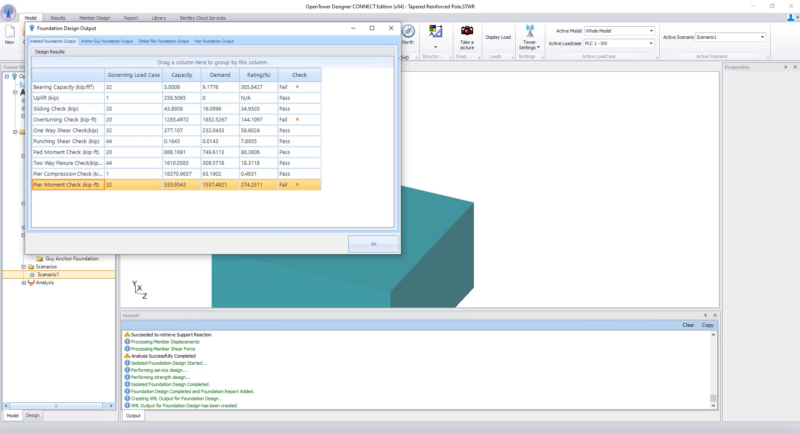
A foundation design check being shown after a scenario analysis was performed.
Modifications are always expensive, and engineers must investigate suggestions for safe but economical design. For example, a tower engineer can evaluate scenarios by rearranging the equipment or adjusting heights, among many other possibilities. With scenario analysis, engineers can create multiple scenarios to evaluate, allowing them to accommodate tenants without major modifications to minimize both cost and time.
Key Benefits for Structural Engineers
Tower owners, operators, and engineers all want the structural analysis of telecom towers to be more accurate, easier, safer, faster, and more cost effective.
Engineers can use scenario analysis to substantially improve efficiency and accuracy with reliable output in several key areas:
- Analyze different parameters and scenarios all at once to save time.
- Select a range of conditions for the design, load generation, and analysis using just a few clicks. This can save hours of work by identifying various scenarios while visually showing an accurate output.
- Generate and preserve the history of design changes without duplicating data. As a result, an enormous amount of data storage can be eliminated, ensuring high-fidelity data and reduction of costs.
- Using one model file for analysis parameters and scenarios serves as a single source of truth, mitigating uncertainty and inconsistencies.
Scenario analysis enables engineers to deliver projects faster with more confidence. The massive time savings, combined with mitigating inconsistencies and eliminating excessive data storage, can significantly reduce costs.
To learn more about OpenTower Designer and its advanced scenario analysis capability, contact us or request a demo.

